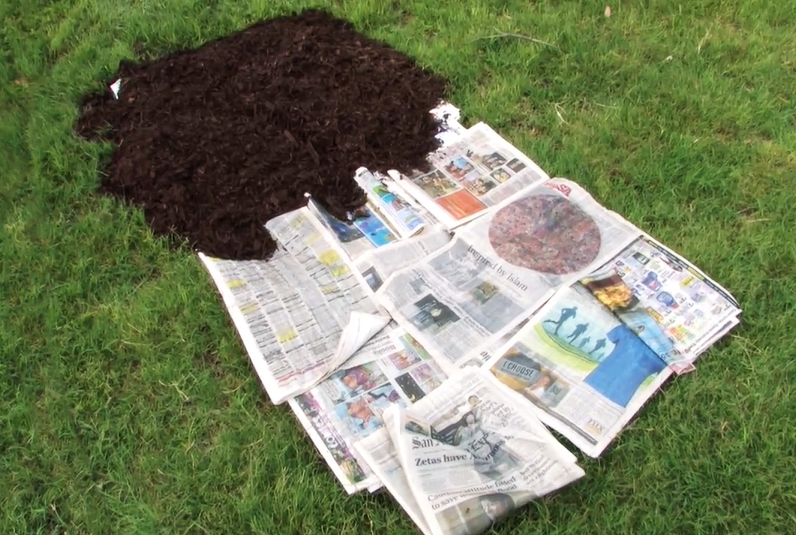There are four steps to eradicate unwanted Bermuda grass without using chemicals. You’ll have the most success if you combine all four.
Invasive, durable, drought and traffic tolerant, Bermuda grass possesses both irritable and admirable qualities. It’s the No. 1 grass that new subdivisions and new homes have installed — and one of the most challenging to get rid of, especially when it’s near another planted area such as a garden bed or trees.
Fortunately, we’ve created plenty of helpful videos and articles all about grass removal.
There are four main steps to nonchemically eradicate Bermuda grass. You’ll have the most success if you combine all four. And, it’s even better if you can start the project in the hot, dry summer. Start planning now so you can replace it with drought-tough plants and beds.
Withhold water.
The area must be dry, preferably very dry. If it’s moist when you dig or till, the cut stems will regrow, creating more grass. No watering. Ever. Also, try not to water adjacent landscaping — it’s easier to replace bedding plants than battle the return of Bermuda grass.
Get physical.
Dig, rototill or spade the area two to three times during summer months. Rake to remove rhizomes and stolons and dispose all plant material collected. This step alone will not remove or kill the seeds. You’ll need to complete the next two steps to kill seeds in the soil.
Turn up the heat.
Clear polyethylene applied over Bermuda grass will solarize seeds and remaining plants and effectively help control it. Irrigate the area where the grass was and lay the plastic over it. Leave it for at least six to eight weeks in summer to create steam. (Note: putting plastic over Bermuda grass in winter will not kill it. You need the heat of the summer sun.) The plastic should extend roughly two feet beyond the Bermuda grass stolons to make sure the area is covered. Weigh down the plastic with bricks or large stones.
Smother it.
 Add six to eight inches of woodchips, bark, shredded cedar or similar mulching material over cardboard or paper, or just by itself. After 12-14 weeks, the combination of darkness, drought, heat and pressure will have killed the underlying stems and seeds. This is the one time that more mulch is better.
Add six to eight inches of woodchips, bark, shredded cedar or similar mulching material over cardboard or paper, or just by itself. After 12-14 weeks, the combination of darkness, drought, heat and pressure will have killed the underlying stems and seeds. This is the one time that more mulch is better.
Although Bermuda grass is the most challenging grass to remove, you can win the battle. But be prepared to repeat all these steps as areas of it persist or return.
It’s not a once and done project. It requires persistence, perseverance, repetition, and determination. But it’s worth it in the end when you can replace it with drought-tough plants and beds.




